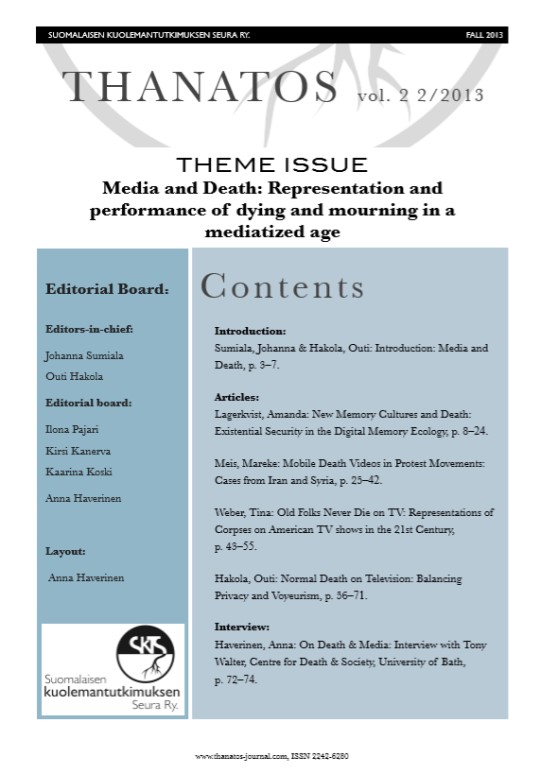Old Folks Never Die on TV: Representations of Corpses on American TV shows in the 21st Century
Abstract
Every day during prime time, millions of viewers can view corpses and experience visually various body parts. This article examines different aesthetic techniques used to represent corpses on television in fictional American programmes in the twenty-first century. The empirical data consist of fifteen different television shows. In this paper two of the shows, a relatively little-known documentary, Family Plots, and a popular fictional series, Six Feet Under, are compared in order to demonstrate contrasting aesthetic styles of representing the deceased. The analytical method consists of a pictorial analysis arising from a structural-hermeneutic approach and based on three classic methods of image interpretation. The theoretical framework is primarily concerned with the discourse on corpse representations on television, in sociology, and in cultural science. The findings will show specific constraints on the presentation of dead bodies, including condition and position, which can be identified as manifestations of a new taboo. Despite these new representations, dead bodies connected with disorder, movement, or illness are largely absent. This paper argues that these constraints serve to protect from any harm the classical Western image of the dead as a silent sleeping beauty
Downloads
Published
Issue
Section
License
Copyright (c) 2023 Tina Weber

This work is licensed under a Creative Commons Attribution-NonCommercial-NoDerivatives 4.0 International License.





